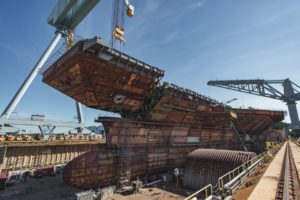
The Navy’s top acquisition official told reporters on Wednesday the new Stem-to-Stern review (S2S) continues but its initial savings may be needed just to make up for expected delays this year due to the COVID-19 pandemic. “We haven’t slowed down, at least in our efforts, on the Stem-to-Stern initiative and identifying where we may have opportunities,” Assistant Secretary of the Navy for Research, Development and Acquisition James Geurts told reporters during a phone roundtable April 1. “We’re continuing to press…

 By
By 











